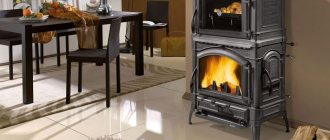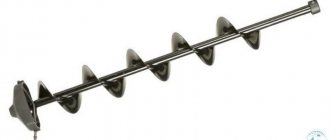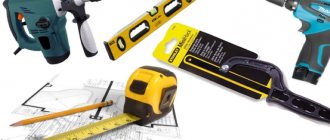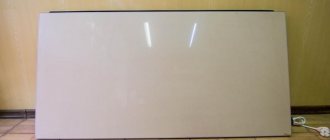Modern housewives need a high-quality and convenient iron for daily ironing of clothes. An important indicator when buying an iron is its sole. How is the steamglide iron sole better than its predecessors? What is it, what is it made of, how to clean it and should you prefer it to aluminum or titanium? In this article we will answer these questions and also look at the features of each type of steamglide sole.
What is the soleplate of a steamglide iron?
Outsole material
What is the soleplate of a steamglide iron made of? The steamglide sole is based on alloy steel. This material is much stronger than aluminum and is less deformable. The sole coating is made of metal-ceramics or glass-ceramics, which provides heat resistance and wear resistance for little money. Philips was the first to bring this innovation to market, keeping it affordable for many consumers.
Form
When designing the sole, the shape was designed in such a way as to make it easy to glide over clothing. The pointed shape of the spout is designed to smooth out small details. The recesses around the sole perform a guiding function.
Number of holes on the sole
The soleplate of the steamglide iron contains many holes of different sizes. With their help, steam is supplied. Wide holes conduct the bulk of the steam, while narrow holes supply hot air under high pressure. This innovation allows the iron to iron clothes almost without touching them, which is the main feature of such irons.
Operational life
Customer reviews indicate that the steamglide iron soleplate provides the iron with a longer service life than aluminum or Teflon soleplates. Philips provides a two-year warranty on irons with steamglide soleplates.
Drop-stop technology
In conventional irons with a steam function, no steam is produced when the low temperature mode is turned on. It turns out that water flows out of the holes, leaving wet marks on clothes. The drop-stop technology controls the flow of water, and when the iron cools down, no water flows and no steam is generated.
Why pay attention to the material of the iron sole?
When considering an ironing machine, the consumer becomes confused as there are many sole options available in the market.
The material of the sole determines how well the iron will glide over the material and how it will iron the item. Sometimes one movement is enough to eliminate wrinkles and unevenness, in other cases – several.
The wider the functionality, the more convenient it is to iron the fabric. However, the larger it is, the higher the price of the product. The sole is part of the basic package and requires a more detailed consideration.
The innovative approach of manufacturers has made it possible to create several main types - steamglide and Eloxal.
Pros and cons of steamglide iron soles
Why did such irons gain popularity?
Pros:
- Allows you to smooth out wrinkles without effort,
- Steam is distributed evenly thanks to the shape and number of holes,
- The coating becomes smoother over time and will not deform,
- Unlike a ceramic sole, the sole of a steamglide iron does not scratch on buttons and other fittings and is lighter,
- Irons with such soles are much lighter than devices with stainless steel or Teflon soles.
- The iron has a built-in scale container that implements a self-cleaning function.
- Service life is almost 4 times longer than other models,
- Affordable price.
Minuses:
- The only drawback is fragility. If the device falls from the ironing board, the soleplate may crack and you will have to buy a new iron.
Steamglide competitors
Models with similar parameters
Along with the type of working surface under consideration, you can also explore other options - products of other brands. Among them is Eloxal from Braun. Characterized by wear resistance and mechanical strength. The sole of this type is made of aluminum oxidized with electrolytes. The material is characterized by high thermal conductivity and lightness. This device is similar in principle to the Steamglide model. The advantages include a more reasonable cost.
The same company produces a line of irons with a Saphir working surface, which is made of an alloy of aluminum, nickel, chromium, and zinc. The result is a material that is superior to steel in strength. The iron received its name due to its excellent performance, in particular wear resistance, which is comparable to sapphire coating.
If you are studying the characteristics of the soleplate of the Steamglide Plus iron or the T-ionicglide steel surface, then the second option is preferable to use. It is distinguished by higher scratch resistance, as well as improved maneuverability when sliding. The base material of T-ionicglide is stainless steel coated with titanium oxide.
Another variety is Durilium. These are Tefal brand products. The coating is made of metal ceramics. Its main drawback is its tendency to form small scratches. In addition, such products are easily deformed. The advantage is excellent ironing quality and ease of gliding.
Features of the soleplate of the steamglide elite iron
The best quality iron sole in this line is the steamglide elite. In addition to the fact that the sole has titanium coating, it has its own characteristics. A powerful blow of steam allows you to instantly smooth out almost any creases. The iron heats up very quickly. Steam is supplied as needed. In a horizontal position, the iron automatically turns off after 2 minutes, in a vertical position - after 8 minutes. The price is correspondingly high.
Which sole material is better?
It is also difficult for the consumer to determine which material is the best. There are not many of them in the modern world. The most common solutions are presented below:
- aluminum. A classic version of the material that has proven its strength over many years of use;
- stainless steel Stainless steel is used in most irons. The most suitable variety for the average consumer who does not require incredible quality;
- Teflon. Compared to the metals described above, it is narrowly distributed on the market. Reduces the likelihood of sticking to the surface of the laundry and does not have a harsh effect that can damage the fibers;
- ceramics. Irons with such soles are among the highest quality. They slide over the surface with ease due to the smoothness of the surface;
- titanium. It is absolutely resistant to mechanical damage. The highest quality material available today. It has no disadvantages other than high cost.
The characteristics described above will allow you to decide on the type of iron, which will make its use long and enjoyable. Modern industry includes billions of models of various types of equipment. It is simply impossible for the average consumer to understand this abundance. To choose a device for household use, you need to at least know which indicator to base your choice on. The information that was presented today will allow you to navigate in an area that is difficult for the average person, and not waste your personal money.
Rostislav Kuzmin
I am glad to welcome you, dear friends, to the pages of my blog! We began to understand irons - such familiar and irreplaceable helpers in everyday life. When choosing such a seemingly simple technique, you first need to find out which iron sole is better. Although it is hardly possible to answer unambiguously here, since each material has its own advantages and disadvantages.
All materials and coatings that improve them are subject to the same requirements:
- fast and uniform heating;
- light weight;
- ease of sliding;
- inertness to any type of fabric (it is unacceptable for a hot surface to stick to silk);
- resistance to mechanical stress (for example, in contact with metal buttons or zippers);
- ease of care.
However, everyone meets these requirements to varying degrees. First, let's look at what material is used to make the soles of modern irons, and then we'll move on to popular patented types of coating. By the way, today manufacturers do not use this or that material in its pure form; as a rule, the surface in contact with the fabric has some kind of spraying or fine processing.
Comparison table of all types of steamglide soles (plus, advanced, elite)
For your convenience, we provide a summary table of the properties of all types of steamglide soles.
| Steamglide sole type | steamglide plus | steamglide advanced | steamglide elite |
| Possibility of fabric tension | + | + | + |
| Durability, wear resistance | + | + | + |
| Drip-stop function | + | + | + |
| Titanium coating | — | + | + |
| Self-cleaning function | + | + | + |
| Affordable price | + | — | — |
| Ease of sliding | + | + | + |
| Instantly removes creases | — | — | + |
Innovative coatings with improved performance
From what was written above, one important conclusion can be drawn: there is no ideal material for the surface of the iron. Each has its own shortcomings, so manufacturers are constantly looking for solutions to improve. Let's consider the best and most popular developments in the production of irons.
Tefal's innovative development is the Ultragliss Diffusion sole - a two-layer enamel coating containing quartz, characterized by increased durability and ideal glide. The special structure of the sole promotes the formation of air cushions, facilitating the ironing process and reducing the load on the hand. The well-thought-out shape of the sole allows you to effectively iron the fabric in different directions.
Philips produces irons with SteamGlide soles, which have an alloy steel base and a glass-ceramic coating. High quality ironing is ensured by many holes of different sizes through which steam is supplied and a “steam sliding” effect is created.
Rowenta's Effective Comfort irons feature a stainless steel Airglide INOX soleplate with a pointed tip and smooth edges for flawless ironing of children's and women's garments with ruffles and ruffles. A more progressive development of the company is the self-cleaning Microsteam sole, characteristic of the Autosteam, Steamium and Pro Master series. It is made of high-alloy stainless steel and has a thin nano glass coating for perfect glide and scratch protection. In the first version, the surface of the iron was equipped with 300 micro-holes, over time this figure was increased to 400. The main advantage of this development is the uniform distribution of steam for easy and quick ironing of over-dried and heavily wrinkled laundry.
Irons under the Bork brand have a super-durable Nanoglass sole with titanium coating and glass coating. As a result, such irons are not afraid of scratches when in contact with clothing fittings and glide perfectly over the fabric. Budget models of the same brand feature a Magnesium sole made of an aluminum and magnesium alloy with an anodized coating. These irons heat up quickly and are light in weight, while being quite resistant to mechanical damage.
Many manufacturers claim that the iron has a self-cleaning function, but Tefal specialists were able to most effectively realize this dream of housewives. Autoclean Catalys technology involves cleaning contaminated products from chemical reactions that occur during the ironing process unnoticed by us. The sole is coated with palladium-coated durylium. As a result of catalytic reactions, the sole remains always clean. Moreover, such an innovative coating does not lose its properties over the years.
These are not all technical developments aimed at improving the characteristics of the iron sole. Each manufacturer strives to surpass its competitors and offer the consumer something qualitatively new, but often beautiful and promising phrases about innovation hide nothing more than an advertising ploy.
How to clean a steamglide iron?
Unfortunately, no matter how modern and well-thought-out the iron is, the problem of carbon deposits and dirt on the sole always remains. But to clean the surface of the iron, it will take a little time and the right cleaning products.
If synthetics are burnt, then acetone will help to wipe it off the sole. Simply soak a cotton pad in this product and treat the burnt area. To clean metal-ceramic and glass-ceramic coatings, do not use abrasives (soda, salt, etc.). They may scratch the sole. You can use soap. Rub the heated sole of the iron with laundry soap and turn off the iron. When it has cooled, wipe the surface with a sponge. The dirt should come off easily with soap.
The simplest thing is to purchase a special pencil (Typhoon, REAM, DIAS). We also rub the burnt areas of the heated iron, including the holes. Then let the device cool down. Wipe dry. You can remove the pencil from the holes by turning on the steam function. Additionally, each hole can be wiped with a cotton swab.
If you observe the temperature regime and use the iron according to the instructions, then you will not need these tips. Almost all irons with steamglide soleplates are equipped with a self-cleaning option. Use it to prevent scale from remaining on the heating elements and soleplate. Don’t be lazy and after each ironing, wipe the sole with a cloth soaked in a solution of citric acid.
Don't miss: Which iron soleplate is the best?
We hope that when purchasing an iron, important criteria for you will be both the material from which the sole is made and the manufacturer. Philips Steamglide has virtually no downsides. The only negative is its relative fragility. From which we can conclude that you need to use the device carefully and not drop it. This rule applies to almost all household appliances. Don’t forget to clean your iron on time, and it will become your indispensable assistant for a long time.
Please rate how useful this article was to you! ( 2 ratings, average: 3.50 out of 5)
Yandex recommends - the best articles on the site
Care instructions
Considering that during operation of the device there is no direct contact with the fabric, there is no need to frequently clean it. However, it is necessary to remove traces of scale from the work surface from time to time. This is due to the fact that ironing is carried out using intense steam.
Therefore, the manufacturer has provided a way to effectively clean the dirty soleplate of a Steamglide iron. For this purpose, a special line of products is produced in the form of anti-scale tablets.
Important: To clean an iron with a Steamglide soleplate, you should clean it once a month. In this case, 1 tablet is used.
Products for caring for the working surface of irons
Reviews
When considering the Steamglide Plus model, consumer ratings and reviews of this sole are examined first. Lightness, convenience, low price - these are the main factors that influenced the positive opinion. Housewives also note the uniform heating of the surface, ease of care and gentle effect on fabrics.
What is this sole?
The sole has many holes of various diameters. With their help, it is possible to create a steam air sole, the effect of which ensures soft gliding.
The manufacturer Philips continues to delight its customers with high-quality equipment for many years. Simplicity and durability of use are the main principles of the manufacturer.
The second, no less popular option is the Eloxal sole. This similar solution for the iron sole is offered by the Brown company. It is distinguished by high strength and resistance to mechanical damage of various types. The aluminum base of the sole will prevent scratches. A special feature is that when used, the material is oxidized by electrolytes. This innovation made it possible to remain in the low price segment, but significantly change the quality offered.
The Eloxal system avoids corrosion due to the strength taken from ceramics and a Teflon base. Ironing things with such irons is easy and relaxed, since aluminum is quite light.
The coating is made from sapphire powder. With it it is possible to achieve maximum smoothness and raise strength characteristics to a new level.
Also, this solution is similar in cost to its analogues. The manufacturer created a unique engineering solution for the profile, making it unique, and maintaining a low cost relative to similar devices.
What type of ironing surface is there?
What kind of coating should you choose for your device so that it is practical and lasts longer?
Ceramics
You should immediately understand that the sole is not made entirely of ceramics, but is only covered with ceramic enamel. It can be made of steel or aluminum.
Ceramics has a number of advantages, so small household appliances for ironing with ceramic coating have taken a strong place in the ranking of popular household appliances:
- The iron heats up quickly and remains warm for a long time.
- Glides perfectly on any type of fabric, be it light or thick.
- The material is easy to clean.
Important! A significant disadvantage of such a sole is the fragility of the material. Such devices must be handled carefully and protected from impacts and falls, otherwise the ceramics may break off or crack.
Teflon
This material is often used in the manufacture of kitchen utensils and household appliances. Therefore, a large number of women, without hesitation, buy irons with such a coating, because they have heard and are to some extent familiar with it.
How are they characterized? — The most important properties are the following:
- The material does not stick to clothes and does not leave damage to the fabric during ironing.
- Compared to other analogues, Teflon does not glide over material as easily as we would like, although it is definitely better than cast iron and aluminum.
- Decorative elements on clothes may cause scratches on the ironing surface.
- The Teflon coating wears off after some time of regular use of the unit.
Stainless steel
Irons with stainless steel soles have been in greatest demand for a long time. There are several reasons for this:
- The cost of the material is inexpensive, so the devices are reasonably priced.
- Stainless steel is resistant to mechanical damage and rust-resistant.
- Glides easily on any material, thanks to various special coatings.
Important! You need to get used to each iron sole when using it. But it is equally important to know the rules of temperature control, about which see detailed information in the instructions “Setting the ironing mode”.
Aluminum
This material is no less popular than stainless steel. It began to be used a long time ago for these purposes, replacing cast iron:
- Aluminum is light and smooth, which allows the iron to glide quickly over the surface of the fabric.
- Since the metal is very soft, scratches and bruises on the surface occur quite quickly.
Important! To eliminate this effect, manufacturers stopped using pure aluminum, replacing it with innovative alloys that retain the advantages of the metal and neutralize its disadvantages. Steamglide, Saphir and Eloxal soles became a similar innovation. We will dwell on the first type of surface in more detail.
What is steamglide sole?
Such an ironing surface in an iron was first proposed by the famous Dutchman. Its main advantage is its high wear resistance, resistance to scratches and ease of sliding on the fabric.
What is the secret of such characteristics of the soleplate of the steamglide iron?
- An important role is played by the coating of the sole, the main material of which is metal ceramics or glass ceramics (depending on the model of the device).
- The sole profile itself has unique properties. Its entire surface has densely spaced holes of various diameters, which ensures incredibly easy sliding across the surface of the fabric by creating a kind of “steam cushion”.
- The iron does not touch the fabric, passing, in fact, a few fractions of a millimeter from it. Thanks to the intense steam supply, the fabric, even in the most stubborn areas, is quickly smoothed and steamed.
Important! An improved version of the steamglide sole is the steamglide plus iron sole.
What are its advantages over a seemingly ideal ironing surface?
Steamglide plus - what is it?
This surface has all the properties of a steamglide sole. Plus, such devices combine a zone of fabric tension during ironing and sliding. An improved version of the iron soleplate, thanks to the even distribution of steam, allows ironing to be done many times faster.
Important! To ensure that you care for any items correctly and you do not spoil your clothes before their natural wear and tear, follow the link, where the decoding of the icons on clothes is described in detail and in an accessible way.
Which sole material is better?
The most common solutions are presented below:
- aluminum. A classic version of the material that has proven its strength over many years of use;
- stainless steel Stainless steel is used in most irons. The most suitable variety for those who do not require incredible quality;
- Teflon. Narrowly distributed. Reduces the likelihood of sticking to the surface of the laundry and does not have a harsh effect that can damage the fibers;
- ceramics. Irons with such soles are very high quality. They slide over the surface with ease due to the smoothness of the surface;
- titanium. It is absolutely resistant to mechanical damage. It has no disadvantages other than high cost.
These characteristics will allow you to choose the type of iron that will make its use long and enjoyable. It is simply impossible for the average consumer to understand the abundance of equipment models. To choose the right device, you need to at least know which indicator to rely on when choosing.
Materials
When choosing an iron, consider different options, characterized by different types of working surfaces.
Types of work surfaces
Among other criteria, the type of material is taken into account:
- Aluminum. This is a lightweight material with high thermal conductivity. The aluminum work surface may leave subtle traces of melting on the material. In addition, this material is not resistant to damage; scratches quickly appear on such a sole.
- Stainless steel. It is quite durable and is used in mid-price iron models.
- Ceramics. The soles of this type are distinguished by maneuverability and glide easily over the material. However, they are susceptible to deformation at the slightest impact.
- Teflon. A working surface with such a coating does not damage the material. Disadvantages: high cost and instability to damage. When in contact with various hard elements of clothing, Teflon quickly scratches.
- Titanium. This working surface is smooth and ensures easy sliding over the material. The main advantage is high strength.
There is also an option with removable soles. These are universal irons. They can be used simultaneously to work with thin and coarser materials. Only for each case a different sole is used. At the same time, the iron kit includes 1 more removable working surface.
Covering and platform material
The platform is based on alloy steel, which gives the sole strength and increases its service life. You can also notice that steel is not susceptible to mechanical damage and is a fairly strong material of excellent quality. Perhaps the main advantage of the steel coating of the Steamglide Advanced iron platform is the low likelihood of sticking to laundry.
The soleplate of the iron is covered with glass ceramics. Unlike other materials, it avoids corrosion and reduces the risk of visible defects during use. In addition, the coating promotes smooth gliding on any fabric, which makes working with the iron much easier. In general, the sole of the components described above makes Steamglide Advanced irons one of the highest quality and most wear-resistant new products.
As we managed to find out, the new product created a huge sensation in a very short time. But this is not surprising, because the developers of the Dutch company have done a good job both on the specific changes in the sole and on its technical characteristics, thereby making life easier for our consumers.
Philips quite often releases unique models that become easier to use and cheaper over time.
Video
Knowing the main types of ironing surfaces, you can choose the model that will be useful for you:
If you iron only when absolutely necessary and very rarely, then you should not spend money on the latest models and overpay for innovations. In this case, a regular steam iron with a stainless solete will be an excellent option. If you iron on a daily basis, then the equipment for this should not only be of high quality, but also the most convenient, functional and quickly do its job.
Then we recommend turning your attention to models with steamglide or steamglide plus soles. This purchase will not disappoint you.
When buying an iron, pay attention to the sole. She comes into contact with clothes and protects them
Let’s figure out which iron sole is considered the best and will last longer.
If the work surface is of poor quality, other functions become meaningless. The bottom must be durable and resistant to mechanical stress.
A number of basic requirements for the working surface:
- Glides easily. Friction with the fabric should be minimal. Movement through the material does not require effort.
- Caring attitude. Gently smooths out wrinkles on clothes without overheating them or leaving creases or snags.
- Even heating. The working plane should heat up evenly over the entire area, smoothing the material the first time.
- Reliability and safety. The device comes into contact not only with fabric, but also with accessories in the form of buttons, locks and metal parts. The sole must be resistant to damage.
- Easy to care for. Plaque from burnt fibers rarely forms. In this case, clean the dirt quickly.
Coatings that do not damage expensive clothes do a better job of ironing.
Features of steamglide
The soleplate of the steamglide iron has become widespread thanks to Philips. It offers its customers modern surface coating technology. Distinctive features of the innovation are resistance to wear and external damage. Such soles fit perfectly into an already established product line.
The most common type of sole covering is alloy steel. This is what helps to maximize service life and wear resistance. The steamglide plus sole is coated with metal-ceramics and glass-ceramics. The material is determined depending on the functional purpose.
(1 rating, average 4 out of 5)











